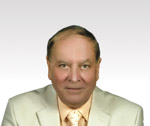Hands-on, Practical Guidance for Educators
From math,
literacy, equity, multilingual learners, and SEL, to assessment, school counseling,
and education leadership, our books are research-based and authored by experts
on topics most relevant to what educators are facing today.

Bestseller!
How the Gifted Brain Learns
Second Edition
By:
David A. Sousa
Translates the latest neuroscientific findings into practical strategies for identifying, understanding, and engaging gifted learners in different subjects, grade levels, demographics, and special need areas.
Product Details
- Grade Level: K-12
- ISBN: 9781412971737
- Published By: Corwin
- Year: 2009
- Page Count: 296
- Publication date: July 30, 2009
Review Copies
This book is not available as a review copy.


